Economic Equality Caucus
which advocates for economic equality across the USA.
| Home | Organizational Structure | State Coordinators | Executive Director | Caucus Articles | Memberships | |||||
| "Delta Vision, Delta Voices" | ||||||||||
|
Help Advocate for Economic Progress and Equality. Donate to the Delta Caucus/Economic Equality Caucus. |
||||||||||
Delta Grassroots Caucus Events

Credit Michael Hibblen/ KUAR News, Arkansas Public Radio; Former President Bill Clinton speaking to the Delta Grassroots Caucus on May 2, 2013, at the University of Arkansas Clinton School of Public Service, Little Rock
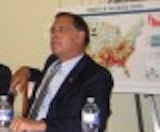
U. S. Senator John Boozman, Arkansas, at a Delta Grassroots Caucus meeting at the US Capitol
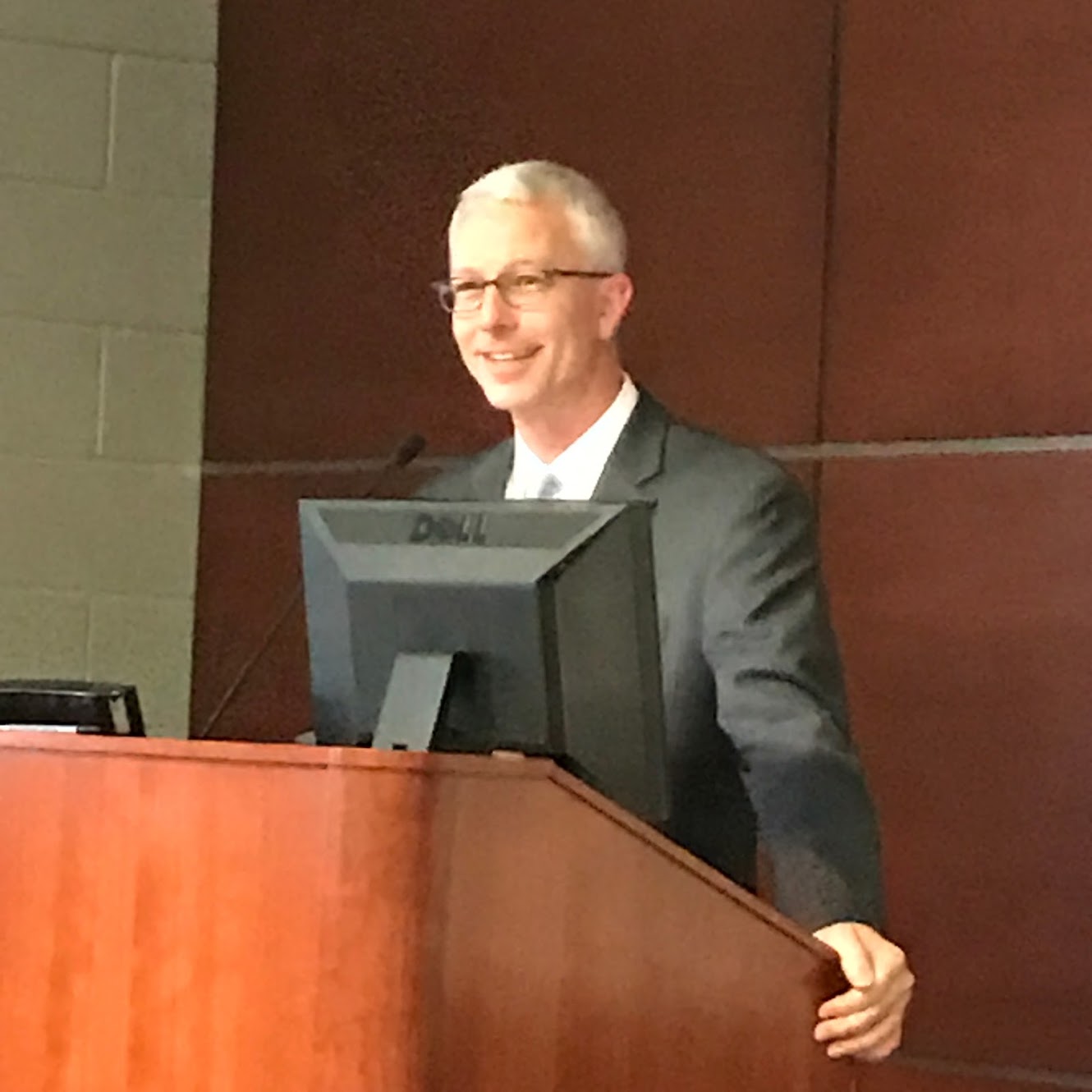
Brad Cole, Executive Director of the Municipal League of Illinois; previously a senior aide to former Republican US Sen. Mark Kirk of Illinois, earlier Mayor of Carbondale, Illinois, veteran Delta regional advocate, speaking at the Delta regional conference in West Memphis, Arkansas on April 26, 2019.

President Bill Clinton makes a comment to Delta Caucus Director Lee Powell at a meeting in Blytheville, Arkansas (in the northeast Arkansas Delta) on Nov. 2, 2014

The Delta Caucus would like to pay tribute to the late, great U.S. Sen. Thad Cochran of Mississippi, a powerful force in the US Senate for decades and a champion for the Delta. Sen. Cochran passed away on May 30, 2019. He spoke to the Delta Caucus on many occasions over the years (he is pictured above speaking to a Caucus event on Capitol Hill in Washington, DC) and his thoughtful, courteous and bipartisan leadership will be sorely missed.
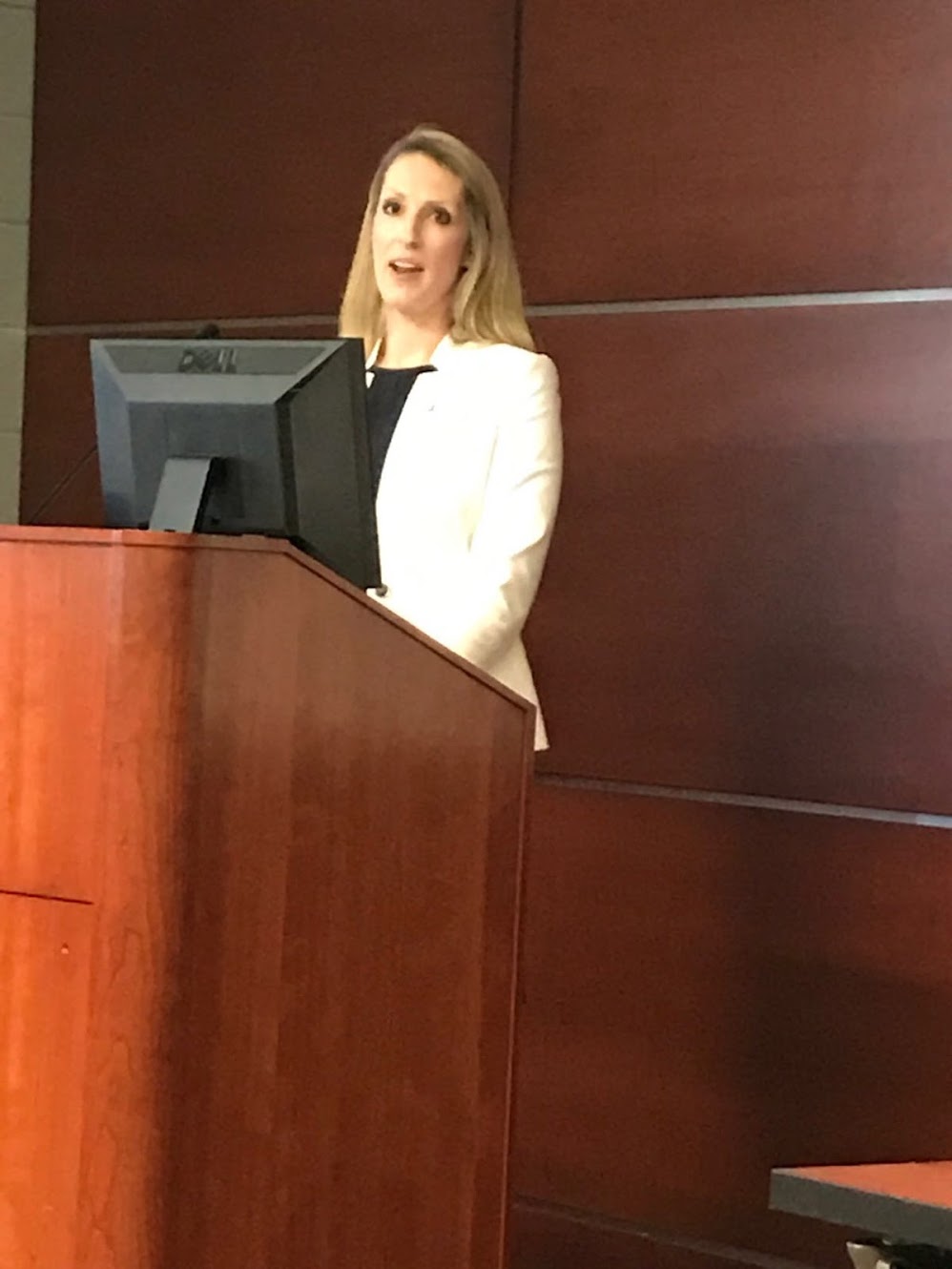
Marcie Lawson, Executive Director, Sikeston, Missouri Regional Chamber and Area Economic Development Corporation, speaking at the Delta regional conference in West Memphis, Arkansas on April 26, 2019.
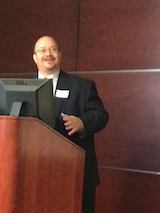
Alan Gumbel, Greater Memphis Alliance for a Competitive Workforce, Memphis, Tennessee, speaking at the Delta regional conference in West Memphis, Arkansas on April 26, 2019.
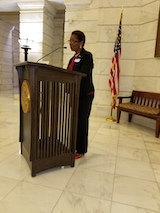
Mayor Shirley Washington of Pine Bluff, AR, speaking to the Delta Caucus at the Arkansas Capitol Rotunda in 2017.
President Clinton's Great In-Person Presentation to Delta Caucus, May 2, 2013
Posted on May 13, 2013 at 04:57 PM
President Bill Clinton gave a brilliant presentation at the May 2-3, 2013 Delta Grassroots Caucus conference at the Clinton Center, in which we commemorated the 20th anniversary of the bipartisan Clinton administration’s Delta Regional Initiative.
President Clinton started off with a 10-minute opening presentation, then did questions and answers for another 20 minutes or so, and then spoke directly with most of the people there for another half hour. He was there for a total of over an hour talking with many old friends and supporters who have worked with him regarding Delta regional issues in many cases for three decades or more. There was a packed house at the University of Arkansas Clinton School of Public Service, with standing room only.
This is the first in a series of articles summarizing the substance of the two-day conference that we will be sending out over the next several weeks.
We have many people to thank for what many people have said they regarded as our best conference yet. We will be expressing appreciation to our many colleagues in the series of articles in our newsletter and posted on the website at www.mdgc.us
Before getting to President Clinton’s presentations, we would like to begin by thanking Martha Ellen Black, Executive Director of the Susanna Wesley Family Learning Center in East Prairie, Missouri and a key member of the Delta Caucus board of directors. Martha Ellen brought several assistants with her to handle the front desk, registration and other administrative details, and she also provided essential substantive feedback. Her support is invaluable and we could not have accomplished this without her help.
Martha Ellen Black has strong ties to the Clinton administration, because she was executive director of an Enterprise Community createdby President Clinton’s 1993 budget package in southeast Missouri that led to improvements in her local area in literacy, employment and other key indicators that began when Clinton was president and have been sustained until today. She was one of the speakers at the 2000 White House Conference on the Delta with President Clinton and many other national leaders.
The conference received substantial media coverage from the Arkansas Democrat-Gazette, KUAR Arkansas Public Radio, Talk Business, the Arkansas News Bureau, the Associated Press, television stations, the Arkansas Municipal League magazine, and other media outlets.
TABLE OF CONTENTS FOR THIS NEWSLETTER
President Clinton’s Presentation at the Delta Conference, May 2, 2013
An Example of President Clinton’s Direct, Personal Involvement in the Delta Regional Initiative in the Year 2000
Subsequent Developments after 2000
Executive Summary of Report on Key Economic Data Regarding the Delta Regional Initiative, 1993-2013
Executive Summary of Best Practices, Private Sector News Announcements, May 2-3, 2013
Appreciation for Delta Caucus Sponsors
President Clinton’s Presentation at the Delta Conference, May 2, 2013
President Clinton spoke at the opening session of the Delta conference on May 2, 2013 at the University of Arkansas Clinton School of Public Service. President Clinton said his hopes are high for economic progress in the Delta Region. The Delta Regional Initiative was a bipartisan effort to promote economic revitalization in the Delta region. Sections of the landmark 1993 Clinton administration economic development and budget legislation held major implications for the Delta’s economic progress during his time in office. The Delta Caucus itself is a direct outgrowth of the Clinton administration’s Delta Regional Initiative.
The Delta Caucus distributed at the conference a 50-page report including data on economic improvements in the Delta states during his administration, and these were referred to several times during the event: The regional unemployment rate was 7.5% when the Clinton administration began, and it declined to 4.2% across the region as a whole by the end of his administration.
The regional poverty rate by the mid-Clinton administration in 1997 was 18.4% and this fell by 2000 to 16.6%, an improvement of 10% in a rate that historically has been intractable or usually gotten worse over time. Everyone knows about our regional and economic problems since 2001 and there were still economic challenges as of 2000, but the regional economy was headed in the right direction in that era.
Clinton looked back in retrospect on the regional initiative, the work of major institutions like Southern Bancorp (which he and Hillary Clinton and the Rockefeller Foundation helped create 25 years ago), Hope Enterprise Corp./Hope Credit Union, the Mid-South Delta Local Initiatives Support Corp. (LISC), Foundation for the Mid-South, Heifer International and the “Seeds of Change” project in east Arkansas, and the Delta Regional Authority that was created in December, 2000 after years of advocacy and support from the Delta Regional Initiative.
In hindsight, the former president said “Here’s what it all means today, in terms of where we are as a country, in terms of where we are with all of these arguments in Washington.: He said it means that “there is never going to be enough government money to take a poor region of America out of the dumps all by itself. You’ve got to have private-sector growth. Number two, in order to have private-sector growth, you’ve got to have good government policy.”
“You have to have government and the private sector, and increasingly all these great foundations in Arkansas working together,” he said.
Clinton referred to economic policy during the speech, saying that “All of the debate in Washington tends to be about what I would call macro-economic policy. But real life is lived in what the economists would call microeconomic policy. The more you go to the micro, the more jobs you’re going to create and the more bipartisan cooperation you’re going to have, because there is no other Republican or Democratic way to locate a plan, to start up an agricultural project,” and to do all the other range of economic development activities.
Clinton referred at one point to the package of more than $200 million in investments in the Delta announced at the conference by major foundations and business partners focusing on job creation, renewable energy/energy efficiency/”green jobs,” nutrition, promoting home-ownership, providing financial services for economically distressed areas from Southern Bancorp, Mid-South Delta LISC, Heifer International, East Arkansas Enterprise Community, Hope Enterprise Corp./Hope Credit Union, Foundation for the Mid-South. For example, he pointed out in particular the merits of Hope Enterprise Corp./Hope Credit Union’s mobile banking app. The Delta Caucus had sent information to him about the announcements beforehand and he clearly had absorbed all that information, from comments he made to Delta Caucus Director Lee Powell and also in his remarks.
For more detail on the HOPE project President Clinton referred to, here is that foundation’s brief summary of their recent progress on this project (CEO Bill Bynum attended the Clinton Global Initiative in Chicago last year and pledged to expand his foundation’s activities in the Delta, and congratulations to Mr. Bynum and his institution for following up on that pledge):
“In December HOPE launched an enhanced version of HOPE Mobile, its mobile banking app. The upgrade not only allows members to check balances and transfer funds, find branches and ATMs, but also incorporates remote deposit capture that enables members to deposit checks using their phone camera. By the time of the Delta conference on May 3, 2013, more than 1,300 members were using HOPE Mobile. Over the coming months HOPE will launch an outreach campaign to promote this important tool that will put the power of a branch in the hands of thousands of people in unbanked and under-banked communities across the Mid-South.”
Bill Bynum, Ed Sivak and many other Hope Enterprise Corp./Hope Credit Union representatives have worked closely with the Delta Regional Initiative during the Clinton Presidency and ever since then.
Clinton praised the work of these great foundations and their many grassroots partners in communities across the Delta. He said that people can say all they want to about the “deficit or what the interest rates ought to be, and if you don’t have community financing, you’re not going to get anywhere.” He said it was his “instinct that the country is due for a pretty good recovery” and “there is nothing wrong with people who live in the Delta.” Many different media outlets quoted these comments: “There is going to be a revival of economic fortunes in rural America. The real questions should be: How do you speed it up? How do you make it sustainable? How do you keep from ruining the topsoil? And how do you make it to where the benefits revolve each year?”
Clinton said that after three decades of advocacy for the region-going back to the Lower Mississippi Delta Development Commission of the 1980s and even his earlier work before that as governor-he believes that the debate on Capitol Hill constantly under-emphasizes the importance of microeconomics and should instead focus on investing in communities including those in the Greater Delta Region.
The former president struck a positive tone and encouraged the Delta Caucus partners to persevere in their advocacy for the region: “I just want you to all know that I do believe, after all of these decades, that you’re going to get rewarded if you just stay at it. In the Delta, we need to bring people together, and that’s why I like this project.”
President Clinton emphasized that with the expected growth in global population, American farmland will only expand in value as our country feeds more people around the world. The Delta has some of the richest topsoil in the world, so this is another source of promise for a brighter future for the region.
While Clinton stressed the importance of having many entities working together, he was emphatically positive about the region’s future: “For the first time, literally in a generation, the larger demographic and other forces that are working in the world will help the Delta region.”
Clinton said that some people had expressed surprise that he was directly involved in budget analysis as president, but he again emphasized the importance of “micro-economics” and staying on top of the specifics regarding key economic issues. His command and attention to crucial, specific budget and legislative decisions were one of the great strengths of his administration, which led this country to eight years of peace and prosperity.
Caucus Director Lee Powell introduced President Clinton, saying he was “the leader who did more for the Delta than any other President in American history.” There would not be a Delta Caucus without President Clinton, Powell emphasized, and his Foundation, Clinton School of Public Service, Clinton Global Initiative and other activities continue to do a great deal of good for the Delta, the country and internationally.
2. An example of President Clinton’s direct, personal involvement in the Delta Regional Initiative:
There was one interesting and illustrative example of his direct attention to specifics and care about the Delta regional issues that was discussed at the conference: In an effort to gain more support in Congress for the passage of the package of over $150 million in a wide range of targeted funding for the Delta region that President Clinton had announced in his 2000 State of the Union address, as well as the then pending legislation to create the Delta Regional Authority, the Clinton administration needed to document the severe economic distress in the Delta region. This eventually took the form of a comprehensive report to be published at the White House Conference on the Delta in May, 2000.
At that time, current Delta Caucus Director Lee Powell was a Clinton administration presidential appointee as Regional Economic Development Adviser at USDA Rural Development and on detail to Secretary of Transportation Rodney Slater’s office in 2000 to focus on managing the Delta regional initiative. At the time there was substantial focus on economically distressed regions of the country-primarily Appalachia, the Southwest Border, and the Mississippi Delta as the three largest regions of long-term poverty.
Powell was executive editor of what would become Delta Vision, Delta Voices, The Delta Beyond 2000, which was eventually published at the 2000 White House conference on the Delta. Powell was in charge of writing, editing and compiling a report with input from all 20 federal agencies of the government with domestic policy jurisdiction. As often happens when dealing with the massive federal bureaucracy, the Delta Regional Initiative hit a roadblock because some of the federal departments provided relevant data by counties, but many of them (who frankly did not understand or care about the regional approach to economic progress in the Delta) claimed they only had state-wide data and so did not send in facts and figures regarding the Delta.
On a moment’s reflection, it is easy to understand how worthless the data would have been if it had been the seven states of the region as a whole and not just the Delta counties (it later became parts of eight states when the Alabama Black Belt was added to the region in the final version of the legislation): data from urban, prosperous Chicago would have been thrown together with data from the rural, impoverished southern Illinois Delta; Kansas City data would be included along with southeast Missouri; prosperous northwest Arkansas would be included along with the impoverished east Arkansas Delta; and so on in every state.
The Delta regions of these states were all lagging behind the states as a whole. State-wide data would not have given the Congress and all the other relevant national institutions an accurate picture of how negative economic conditions were in the Delta and therefore why a national effort to aid the region along the lines of the Kennedy-Johnson Appalachian Regional Commission was needed.
Powell went directly to President Clinton and explained the problem of only getting state-wide data from many of the federal agencies. The president immediately grasped the problem and said “I’ll shake it loose for you, Lee.”
With all the White House had to deal with in the nation and the world, the Delta Regional Initiative management team was not sure about the outcome. That group included the late great Carl Whillock and Secretary Dan Glickman at USDA, Senior White House aide Bob Nash helping out from his office, Deputy Assistant Secretary Al Eisenberg, Inter-Governmental Affairs Director Harold Gist, Congressional Affairs Director Wilson Golden from Mississippi, Lee Powell and others in Secretary Slater’s office, US Assistant Secretary of the Interior Ken Smith, FEMA leaders Jamie Lee Witt and Kay Goss and many others. Those agencies had provided the relevant county-wide data, but time was running out and we weren’t sure we could get all the others to get on the ball.
As it turned out, we shouldn’t have worried.
President Clinton quickly and effectively followed through: A day or so after this problem was brought to his attention, Powell received a phone call from the chief of staff of one of the departments that had wanted to only send in state-wide data who said, “Well, Mr. Powell, an interesting development has happened, the Secretary and I have taken a second look at this and have surprisingly discovered that we actually can get you all the data by counties with the specificity you had earlier requested.”
Powell quickly received a series of other messages from all the federal agencies, all with the basic content that “You know Mr. Powell, the strangest thing has happened, we have looked into this matter more closely and have just found out that we can provide the county-wide data.” The White House did a great job of rattling the right cages across the enormous bureaucracy. So all the data came in and was documented in the comprehensive Clinton administration report published in May, 2000 at the White House Conference on the Delta, Delta Vision, Delta Voices: The Delta Beyond 2000.
After his remarks on May 2, Lee Powell reminisced about that anecdote with President Clinton and his direct, personal help for the regional effort, and the former president smiled and said, “Well, that’s another example of micro-economics, Lee.”
As we emphasized at the conference, the Delta grassroots partners led by Kevin Smith, Mark McElroy, Steve Jones and many others were beating the drum loudly from the local level in the Delta, and this was tremendously helpful for those of us working on the inside in the administration.
The report and the conferences, both in Washington and all up and down the Delta, helped the momentum to pass the legislation; but if we hadn’t passed the legislation it would have been a major lost opportunity, to put it mildly.
In passing the bill creating the DRA, President Clinton emphasized a cooperative, bipartisan approach and lined up support from key Republican Members of Congress like Sen. Thad Cochran (R-MS), Sen. Richard Shelby (R-AL), and Rep. JoAnne Emerson (R-MO), among many others, along with Democratic support from Sen. Blanche Lincoln (D-AR), Rep. Marion Berry (D-AR) and others.
At one meeting in the Roosevelt Room with a group of Republican and Democratic leaders, President Clinton said he would be glad to give the Republicans plenty of credit and his only concern was to get the DRA created. He said if the Republicans want to “We’ll call it the Calvin Coolidge Delta Regional Authority” if that’s what it takes to get the bill passed.
3. SUBSEQUENT DEVELOPMENTS AFTER 2000:
The bipartisan approach worked and President Clinton signed the bill into law in December, 2000. It was originally envisaged at funding for $30 million, but unfortunately the Bush administration slashed the budget down to $4 million by 2004, with a budget request to cut it further down to a pitiful $2 million.
At that point, the Delta Grassroots Caucus partners and our allies in Congress became re-energized. We scratched and clawed our way to get the funding up from the low point of $4 million and what was clearly the threat of abolishing the DRA altogether, to a level of about $13 million today.
We should emphasize that $13 million is far too low. DRA officials do a great job of stretching their small budget as far as possible, but they need more budgetary resources. We can’t increase its budget in the current political and fiscal climate, but at some point we need to have a policy of national equity among the regional commissions. For example, the Appalachian Regional Commission has a budget in the energy and water bill of about $70 million or so annually, and over $400 million for the Appalachian regional highway system. We support our colleagues at the ARC and applaud their work, but the regions need to be treated equally based on population, economic data and need.
As soon as the economy improves, we need to have the debate about a national system of fairness among the major economically distressed regions like the Delta, Appalachia and the Southwest Border. Sen. Richard Shelby is one notable example of a leader from the region who believes there ought to be a policy of fairness and equity among the regional commissions.
We would also like to emphasize that the DRA has never been considered the sole cure for all the Delta’s ills (that would be an unfair burden to place on one agency)–in fact it is one very important initiative among many important initiatives. Here we would like to include the two-page executive summary of the 50-page report analyzing in retrospect the Delta Regional Initiative from 1993 to 2013, followed by a short summary of the package of $200 million in private sector announcements made at the May 2-3 Delta conference.
4. Executive Summary of Report of Key Economic Data Regarding the Delta Regional Initiative, 1993-2013
President Bill Clinton’s landmark economic development and budget package became law in 1993. Nationally the administration’s policies generated eight years of prosperity and turned massive budget deficits into a surplus by the end of his Presidency. While many areas of the Delta continued to lag behind the national averages, it is important to recognize the facts that employment, poverty levels and other key economic indicators demonstrated substantial improvement across the region from 1993 to January, 2001.
The Delta Caucus partners of course acknowledge that many Delta areas continue to lag far behind the rest of the country today, but we also need to take stock of what has worked well and the constructive activities in the region. Specific information on each of these initiatives follows in this document (see Table of Contents below):
Regional employment and poverty improvements, 1993-2000: When the Clinton administration began in 1993, unemployment in the region was 7.5%. By 2000 the unemployment for the region’s counties was down to 4.2%. Regional poverty by mid-Clinton administration in 1997 was 18.4%, and this fell by 2000 to 16.6%, an improvement of 10% in a rate that historically has been intractable or gotten worse over time.
Economic policies changed drastically after the Clinton administration. The poverty rate in the Delta after 2000 had already declined to 18.6% by 2004, erasing the gains made up to 2000. Of course, the recession in 2008 and afterward made employment, poverty and other economic indicators deteriorate by a wide margin.
President Clinton’s Foundation, School for Public Service, Clinton Global Initiative and other organizations pursue a wide range of constructive activities in the Delta and nationwide in energy efficiciency, renewable energy, small business entrepreneurialism, child nutrition, health care, charitable giving to good causes across the region. Clinton School graduate students have conducted 31 public service projects in the Delta and add more each year.
Energy efficiency and renewable energy: The Clinton Global Initiative and Climate Change Initiative are key supporters of renewable energy and energy efficiency in the Delta. CCI’s Home Energy affordability Loan (HEAL) program creates sustainable, local jobs, cutting carbon emissions, and paying for retrofits by long-term energy bill savings.. Piloted in Arkansas, HEAL facilitates a commercial retrofit to employers and gives their employees an opportunity to get home energy audits. Employees can make their home more energy efficient through home improvements, which will lower their utility bills. HEAL uses payroll deductions to repay the loans that finance the retrofits. By mid 2012, HEAL was implementing 650 residential audits and 175 retrofits.
Five Arkansas employers - L’Oreal, USA; Arlington Hotel; Friendship Community Care; Hendrix College; and, Century Industries are implementing HEAL energy retrofits. These industrial retrofits have a total projected annual savings of $410,000, a payback of four years, and a reduction of 1,782 tons of greenhouse gas emissions. CCI is in the process of replicating this program across the Delta and nationally.
Private sector renewable energy/energy efficiency initiatives: Many universities and colleges have renewable energy programs, including Mid-South Community College, the University of Arkansas sytem, Murray State University, Arkansas State University and many others. Siemens, Inc. conducts renewable energy, energy retrofits and “green jobs” across the Delta; to cite a few examples: three new projects in Vicksburg, Greenville and Cleveland, MS, resulting in ongoing annual savings for just those three cities of $1,617 million a year, with many other projects planned for the region. Siemens works with the Clinton Foundation and many othes in promoting energy efficiency and green jobs in the Delta. Another example is FutureFuel’s Batesville, AR plant Batesville, AR reached a capacity of 495 million gallons of biodiesel, and employs over 500 people.
DRA– Since its creation 10 years ago, the Delta Regional Authority has targeted investments in this region of 10 million people in all eight states, creating over 6000 jobs and retaining nearly the same number of jobs. With a leverage ratio of 23:1, the DRA leveraged $1.4 billion in private investment with DRA projects and helped 17,000 families gain access to clean water and sewer service. The Delta Doctors Program placed over 140 doctors in underserved areas, and the DRA engages in strategic planning and technical assistance in health care, transportation, information technology, small business, renewable energy and other key regional issues.
The Delta Grassroots Caucus is a direct outgrowth of the Clinton administration Delta Regional Initiative and includes grassroots leaders in all eight states and Washington, DC conducting advocacy for community and economic development to state, regional, and federal “powers that be,” as well as disseminating information about “best practices” and models for development in the private sector. Over 2,000 local leaders have been directly involved in our activities and thousands more over the Web, email newsletters and other media.
Lower income initiatives: The Clinton administration reformed and expanded the Community Re-Investment Act, Earned Income Tax Credit, New Market Tax Credit, Community Development Financing Institutions, Empowerment Zones and Enterprise Communities. These programs focused on the key areas of transportation, job creation, health care, education, infrastructure, energy and small business development.
There were a total of 14 EZs and ECs in the Delta-fully one fourth of all the rural USDA EZ/ECs in Round One created by the 1993 landmark Clinton administration budget package were located in the Delta-eight of them. One of the programs’ great successes was the communities‘“leveraging” funds. For example, the rural communities drew $10.225 million from their EZ/EC funding from 1994 to 1999, while total funding in State, local, private business, and nonprofit foundation sources-came to ten times that much: $107.4 million. These entities continue today in the region either under the same name or other similar nonprofit designations.
Transportation: The Lower Mississippi Delta Development Commission’s 10-year goal in 1990 envisioned an improved network of highways, airports, rail and port facilities to promote economic growth. The majority of the Commission’s nearly 70 transportation recommendations were completely or substantially fulfilled, although some remained incomplete-in particular progress on I-69 was far too slow. Overall, the Intermodal Surface Transportation Efficiency Act of 1991 (ISTEA) and Transportation Equity Act for the 21st Century of 1998 (TEA-21) dramatically increased Highway Trust Fund investment in highways, transit, and other transportation programs in the region. Delta States have used the flexibility established in ISTEA to fund improvements to the Great River Road, as well as for scenic easements, historic preservation and other projects.
For example, in Arkansas in the 1990s $140 million completed about 120 miles of highway reconstruction, surfacing, widening and other projects in Delta counties. In 1998, the Gulf Coast High Speed Rail Corridor linking New Orleans with Baton Rouge and other Southern cities was designated, with about $2 million for high-speed rail development and grade crossings. Numerous maritime transportation projects were completed in the region, and in 1993-99 the Federal Aviation Administration provided more than $400 million to the region for airport improvements in the region. Such transportation improvements are a powerful engine for economic growth and repair the Delta’s declining infrastructure. We need to resume infrastructure investments today.
5. Delta Caucus Executive Summary of Best Practices, Private Sector News Announcements
Clinton Presidential Center: Mid-South Delta LISC, the Foundation for the Mid-South and the east Arkansas “Seeds of Change” partners made separate announcements totaling more than $200 million to be invested in community and economic development in the Delta. HOPE Enterprise Corp./HOPE Credit Union reached a milestone of more than tripling the number of their customers benefiting from financial services, and Southern Bancorp announced the milestone of surpassing $3 billion in total lending to Delta consumers and businesses for affordable credit and capital in markets largely abandoned by banks.
The package of exemplary role models for development was announced at the May 3 Clinton Library conference of the Delta Caucus commemorating the 20th anniversary of President Clinton’s bipartisan Delta Regional Initiative. Each organization has a detailed announcement in this package. Here are the highlights:
LISC: Mid-South Delta Local Initiatives Support Corporation (LISC) announces investments of $60 million in loans, grants and equity, with approximately a $10 million investment over five years in program support and credit enhancement, and leveraging up to an additional $190 million in total development costs from their network of local partners across the region, for a total investment range of $200-$250 million. The investments are for housing, job creation, energy efficiency in LISC’s Green Development Center and “green” best practices, policy advocacy, and other community and economic development initiatives in the region.
Southern Bancorp: On the 25th anniversary of its formation by then Gov. Bill Clinton, the Winthrop Rockefeller Foundation, Southern Bancorp and its affiliates have reached milestones of more than $3 billion in loans for affordable credit and capital in markets largely abandoned by banks, helping over 1,000 individuals accumulate assets through Individual Development Accounts (IDAs), and granting more than $10 million to communities in the Delta areas of Arkansas and Mississippi for local revitalization projects.
Heifer International: announces a $250,000 implementation grant for FY14 to support the “Seeds of Change” project in the east Arkansas Delta focused on sustainable agriculture and enterprise development, farmers’ markets, technical assistance, financial training, credit counseling, value-added goods and other actions filling the gaps in the regional food value chain. This is progress following up on Heifer’s pledge to expand their activities in the Delta made at the Clinton Global Initiative in 2012.
The Foundation for the Mid South announced a pledge of up to $2M to address workforce and economic development opportunities in the Delta.
HOPE Enterprise Corp. and HOPE Credit Union , (like Heifer) has made impressive progress on the pledges they made at the Clinton Global Initiative last year as well as in recent years since the financial crisis. They have just now reached milestones since the 2008 recession and financial crisis, increasing member-owners from 9,000 to 28,000 and closing more than 7,200 loans totaling over $260 million.
Projects announced include a new credit union set up in Utica, MS after the only bank in the city closed, a new micro branch to be set up in Pine Bluff in collaboration with UAPB, and surpassing 1,300 members benefiting from a new enhanced version of HOPE Mobile, their mobile banking app.
6. APPRECIATION FOR SPONSORS
We’d like to again express appreciation for our sponsors:
LEAD SPONSOR:
Fed Ex Express, Memphis, Tennessee
MAJOR CO-SPONSORS:
Heifer International,
the Housing Assistance Council, Washington, DC;
the City of McGehee and McGehee Industrial Foundation;
City of Sikeston, Missouri;
University of Arkansas Clinton School of Public Service
Arkansas Trucking Association
SPONSORS:
The East Arkansas Enterprise Community;
Rep. Mark McElroy;
Blytheville-Gosnell Regional Airport Authority;
Writing Our World Press;
AvanTech Services, Marion, Arkansas;
BGACDC Agency, Marvell, Arkansas;
West Tennessee Delta Grassroots Partners;
Southeast Missouri Delta Grassroots Partners;
State of Mississippi Delta Grassroots Partners;
Cooperative Baptist Fellowship;
Entergy Arkansas.
DELTA GRASSROOTS CAUCUS PARTNERS:
Last but not least, we would like to thank the hundreds of people and organizations who made contributions in the range of $125, $100, $50 or $25 in the form of annual membership dues, registration fees, and other contributions.
Back to the top